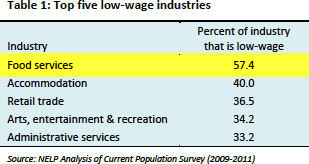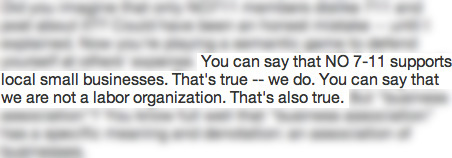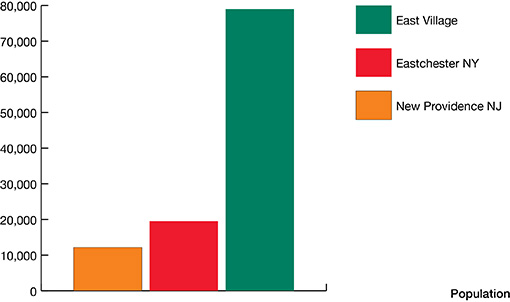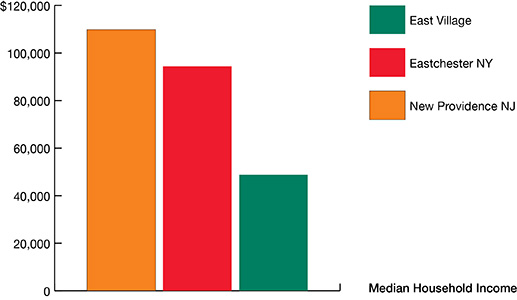If the real estate cowboys invading the Lower East Side in the 1980s used art to paint their economic quest in romantic hues, they also enlisted the cavalry of city government for more prosaic tasks: reclaiming the land and quelling the natives. In its housing policy, drug crackdowns, and especially in its parks strategy, the City devoted its efforts not toward providing basic services and living opportunities for existing residents but toward routing many of the locals and subsidizing opportunities for real estate development. A 1982 consultants’ report entitled An Analysis of Investment Opportunities in the East Village captured the City’s strategy precisely: “The city has now given clear signals that it is prepared to aid the return of the middle class by auctioning city-owned properties and sponsoring projects in gentrifying areas to bolster its tax base and aid the revitalization process” (Oreo Construction Services 1982).
The City’s major resource was its stock of “in rem” properties, mostly foreclosed from private landlords for nonpayment of property taxes. By the early 1980s the Department of Housing, Preservation and Development held over 200 such in rem buildings in the Lower East Side and a similar number of vacant lots. With sixteen of these properties, the Koch administration made its first significant foray into the real estate frenzy of gentrification; artists were to be the vehicle. In August 1981 HPD solicited proposals for an Artist Homeownership Program (AHOP) and the next year announced a renovation project that was to yield 120 housing units in sixteen buildings, each costing an estimated $50,000, aimed at artists earning at least $24,000. Their purpose, the Mayor proclaimed, was “to renew the strength and vitality of the community,” and five artists’ groups and two developers were selected to execute the $7 million program (Bennetts 1982).
But many in the community disagreed vigorously enough to oppose the AHOP plan. The Joint Planning Council, a coalition of more than thirty Loisaida housing and community organizations, demanded that so valuable a resource as abandoned buildings should be renovated for local consumption; city councilwoman Miriam Friedlander saw the plan as “just a front for gentrification”; “the real people who will profit from this housing are the developers who renovate it.” And indeed, the HPD Commissioner expressed the fervent hope that the project would be “a stimulus for overall neighborhood revitalization.” While supporting artists portrayed themselves as normal folks, just part of the working class, a population already largely displaced from Manhattan who deserved housing as much as anyone else, an artists’ opposition emerged — “Artists for Social Responsibility” — who opposed the use of artists to gentrify the neighborhood. HPD, the mayor and AHOP were ultimately defeated by the City Board of Estimate, which refused to provide the initial $2.4 million of public funds (Carroll 1983).
But AHOP was a warm-up for a larger auction program, as HPD prepared to leverage gentrification citywide using in rem properties. The Joint Planning Council decided to grab the initiative by proposing its own community-based plan, and in 1984 it proposed that all City-owned vacant lots and properties be used for low- and moderate-income housing and that the speculation responsible for eliminating existing low-income units be controlled. The City ignored the community plan and came back with a “cross-subsidy” program. HPD would sell City-owned properties to developers, either by auction or at appraised value, in return for an agreement by developers that a vaguely specified 20 percent of rehabilitated or newly built units would be reserved for tenants unable to afford market rates. Developers would receive a tax subsidy in return. Initially some community groups gave the program tentative support; others sought to adjust the ratio of market-rate to subsidized housing to 50:50, while others rejected the entire idea as a backdoor route to building minimal public housing.
But opposition mounted as the actual intent of the program became clear. In 1988 the City announced that the Lefrak Organization — a major national developer — would build on the Seward Park site where, in 1967, 1,800 poor people, mostly African-American and Latino, were displaced when their homes were urban renewed. They were promised the new apartments scheduled for the site, but twenty years later the renewal was yet to happen. The fee for the site was $1, and Lefrak would pay a further $1 per year for the ninety-nine-year lease. Under the plan, Lefrak would build 1,200 apartments, 400 of which would be market-rate condominiums, 640 would be rented at $800–$1,200 to “middle-income” households earning $25,000–$48,000, and the remaining 160 units would go as “moderate-income” units to those earning $15,000–$25,000. No apartments were actually earmarked for low-income people. Further, all rental units would revert to Lefrak as luxury co-ops on the open market after twenty years; Lefrak would get a thirtytwo-year tax abatement, and an overall City subsidy of $20 million. Lawyers representing several of the 1967 tenants filed a class action suit against the Lefrak condo. “Yupperincome housing in low income neighborhoods” is how one housing advocate described the plan, “and the purpose is creating hot new real-estate markets” (Glazer 1988; Reiss 1988). The project got as far as a “Memorandum of Understanding” with the City, but as the depression closed in, the folly of attaching any subsidized housing to market development became clear. Lefrak abandoned the project — but not before it became clear that the City had no intention of mandating Lefrak to build the 20 percent of subsidized units in the same neighborhood. The geographical mobility of the subsidized housing of course opened up the specter of gentrification again for those who had not already seen through the “double-cross subsidy” program, as it came to be known by community activists.
=-=-=-=-=
Neil Smith, The New Urban Frontier (London/New York: Routledge, 1996) 22-23.


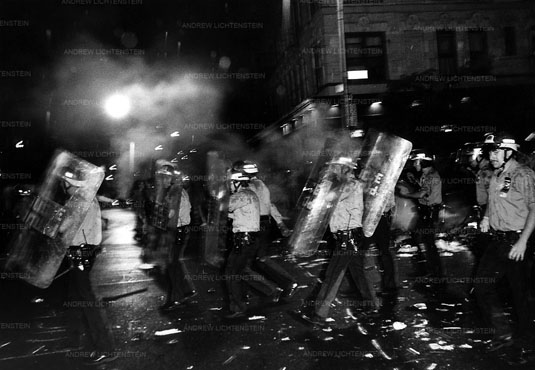
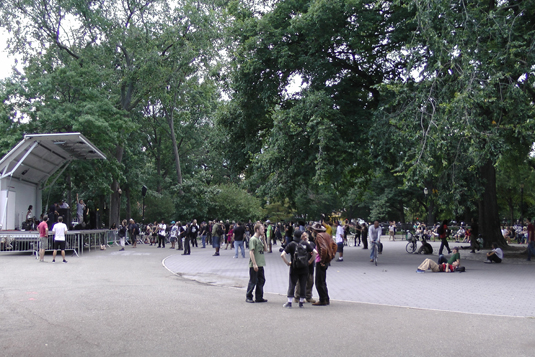
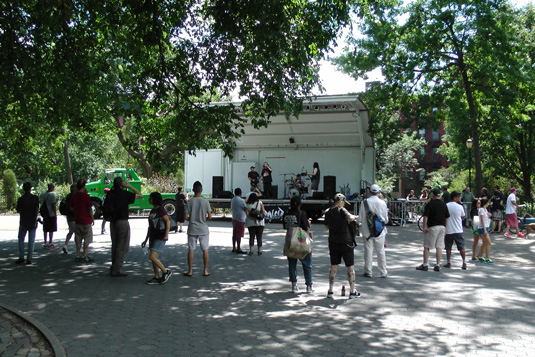
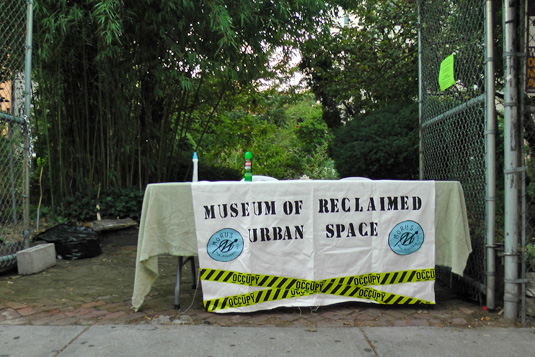


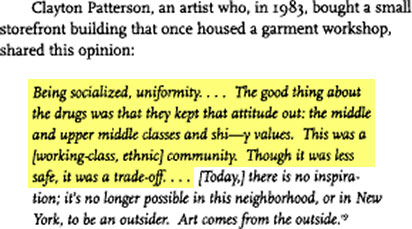

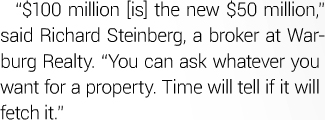



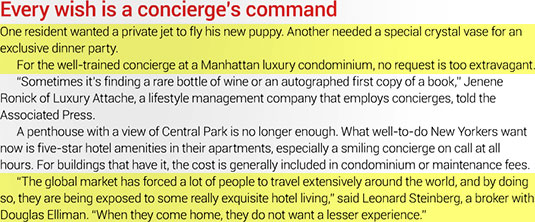
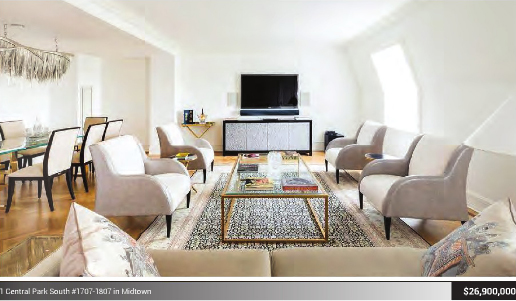
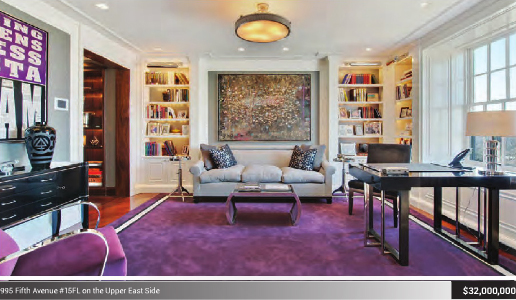
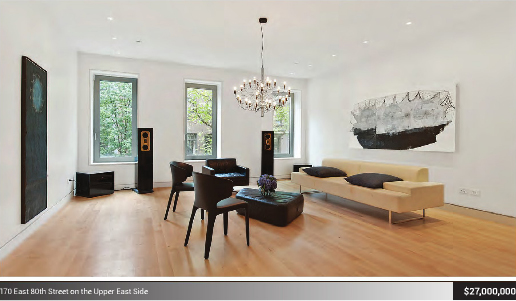
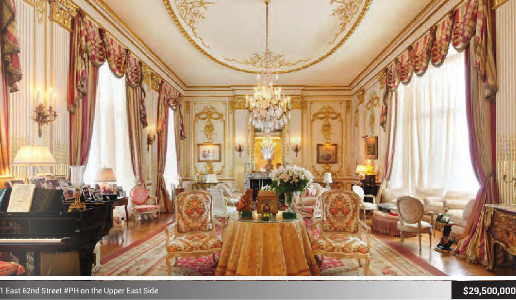
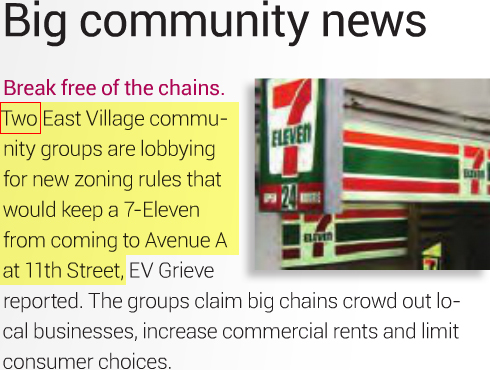

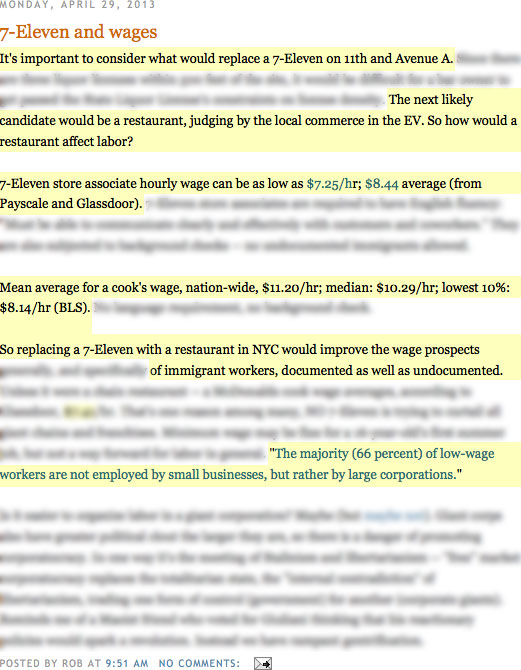
 1
1 1
1